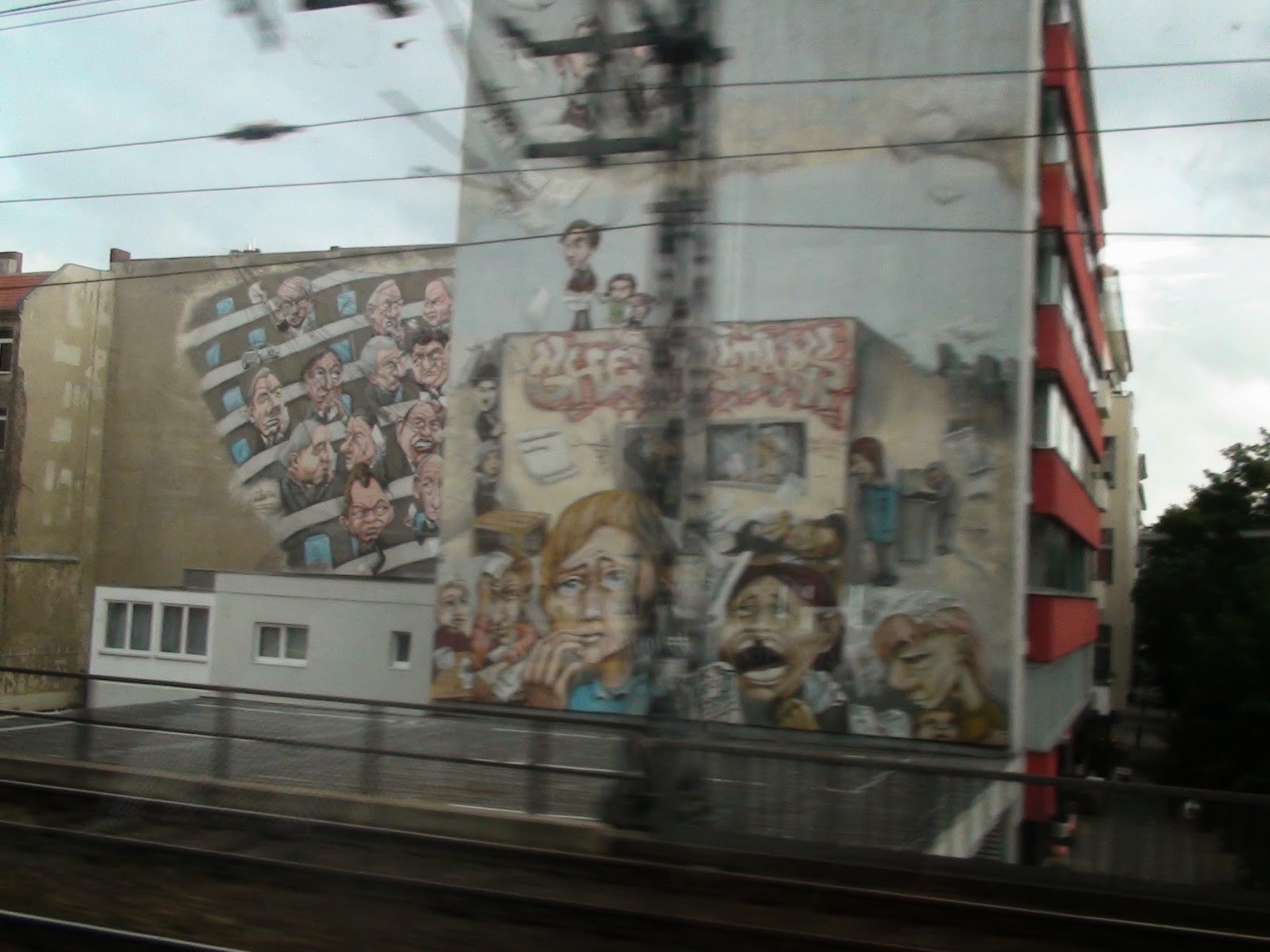 |
| BRANDENBURG GATE |
I recently chose to visit Berlin. This was a city which saw a lot of turmoil. It saw History being created for the destruction of humankind. It brought about a lot of pain, suffering, discrimination and dehumanizing people on the basis of their religion or physical impairment It was the pursuit of a particular person to create a superior race. The woes of considering oneself superior and eliminating those whom they consider inferior surely speaks volumes about the society then. Jungle law says Survival of the Fittest, but then are we are not human beings who are supposed to be civilized, thinking people, social people who want to take everyone with us?
 |
| AN OLD BUILDING |
After the Second World war Berlin was divided into two parts the Western part was occupied by USA and the eastern portion was controlled by USSR. Therefore it has two airports and two main Railway stations.
 |
| WIDE ROADS |
The roads are very wide, cyclists are encouraged as their are cycle paths, and traffic of cars was very scant. All that one could see were Mercs, BMW's, Audis, VW's. There were very few Japanese cars on the roads.
I loved the area where my hotel was located.
Wilhelmstrasse is the road where History happened. This was the road on which all the Ministries, the Gestapo, Hitler's House and the British Embassy were located. Walking down Wilhelmstrasse is a great experience. It is a very wide road and I could visualize the huge flags of the Third Reich, the might of Hitler, the massive military strength that was displayed on these buildings and the road where the marching troops went by. It all looks very professional, majestic, and mighty. I was particularly interested to see the building where Hitler lived. I learnt that in 1938-39 a new Reich Chancellery was built for Adolf Hitler by Albert Speer on this street. This building stood immediately south of the old Chancellery, on the corner of the Wilhelmstraße and the Voss Strasse, and its official address was Voßstraße 4, but the balcony from which Hitler addressed crowds faced the Wilhelmstraße. I walked up and down this road for three days trying to locate the exact spot without success. On the third day I found a small board stating that 77 Wilhelmstraße was located here. It did not state that Hitler lived here. Presently there is a residential car parking at that place.
 |
| WHERE HITLER'S BUNKER WAS |
After the occupation of the City by the Russians, construction of new buildings in the area around the Führerbunker( Hitler's Underground bunker) began. It was a strategy employed for ensuring that the surrounding place remained anonymous and unidentifiable. As it is during the War all the old buildings had been fully destroyed. Now the new rulers had tried to wipe out all trace of this place. As it is said in Urdu, "is jagah ko naist nabood kar diya", this place was totally destroyed. One may destroy buildings but can one erase memory and the sad history of the place?
During the Nazi rule the German Foreign office headed by Joachim von Ribbentrop stood at Wilhelmstrasse 73. The Finance Ministry stood at Number 61.The Propoganda Ministry of Joseph Goebbel's was at 8-9 . The British Embassy was at number 70.The only major building that survived the bombing was Reich Air Ministry at Wilhelmstrasse 81-85. The Berlin Wall was broken on the 9th November 1989 but there are two portions of the wall maintained as tourist attractions. One portion is near the Topography of Terror and the other portion is near the river. The portion near the river is filled with graffiti.
Berlin was and still is a very beautiful city. The trauma that the people of this city underwent can only be felt, words cannot express the agony and uncertainty that the Berliners may have had to face. Those who were friends suddenly became foes if they were Jews or had physical deformity or had a different ideology or belief. It is rather strange how one person could create so much havoc, destruction and misery. Ribbentrop, Eichmann Goebbels they had so much power and they wielded it for creating terror.The beauty of Alexander Platz, the magnificent Reichstag, The Brandenburg gate, Potsdamer Platz, pales when one thinks of the horrors that went on in this City.
|
 |
| MEMORIAL |
We went to see the Topography of terror, which is located at exactly the same spot where between 1933 and 1945, the central institutions of Nazi persecution and terror– the Secret State Police Office with its own “house prison,” the leadership of the SS and, during the Second World War, the Reich Security Main Office – were located. It was the office of the "Gestapo." This is now a museum with a lot of pictures.
 |
| THE ONLY BUILDING THAT SURVIVED THE BOMBINGS |
Berlin has a huge underground city which had been built for shelter during air raids during the IInd World War. We took a guided tour of an underground bunker. It a very big planned shelter, with rooms, benches and toilets too. There were rooms for women with small kids too. It was expected that the shelters would be for short durations. They are well ventilated and not claustrophobic. It just goes to show how well prepared the regime was to take care of its people.
 |
| THE OLD & THE NEW |

















































